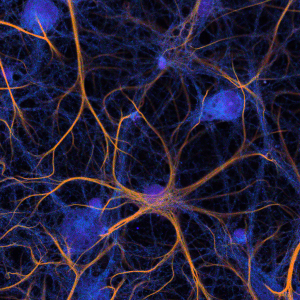September 6, 2022
Fluorescence microscopy on a new level
A new system makes quantitative time-resolved fluorescence microscopy accessible to a broader range of scientists
“Today, I need the help of my physics post-doc, when I want to exploit the capabilities of my single photon fluorescence microscope” says a prominent group leader in Biochemistry. “Your new system with this judicious technology would release him to do his actual work.”
That statement was given when developers from PicoQuant in Germany asked the professor for his feedback on their latest prototype of a new single photon counting fluorescence microscope. In the meantime, the prototype has become a full product named Luminosa.
Over the past decades, the developers at PicoQuant have focused on making the most quantitative and reproducible time-resolved fluorescence microscopes. Now they have taken the next step and created a system that is easier to use without any compromise on sensitivity. The result is a real breakthrough since it makes these systems accessible for users who do not enjoy the support of a trained physicist. The new Luminosa now allows every researcher in molecular biophysics or structural biology to easily integrate methods from single molecule and time-resolved fluorescence microscopy into their toolbox.
 Main features of the Luminosa system include a one-click auto-alignment procedure and context-based intuitive workflows. For example, the system can automatically recognize individual molecules, or it may determine correction factors for single molecule FRET (smFRET) automatically.
Main features of the Luminosa system include a one-click auto-alignment procedure and context-based intuitive workflows. For example, the system can automatically recognize individual molecules, or it may determine correction factors for single molecule FRET (smFRET) automatically.
For the experienced expert it still offers advanced flexibility. All optomechanical components are accessible, data is stored in open formats, and the workflow as well as the graphical user interface can be customized. The user is given full access to experimental parameters such as the adjustable observation volume.
The new Luminosa itself is a versatile toolbox for time-resolved fluorescence microscopy. It is made for research in dynamic structural biology at the single molecule level. The methodologies include Fluorescence Lifetime Imaging (FLIM), rapidFLIMHiRes for fast processes, FLIM-FRET, single molecule FRET (burst and time trace analysis), Fluorescence Correlation Spectroscopy (FCS), Anisotropy Imaging, and Differential Interference Contrast (DIC) Imaging.
As the user base of time-resolved fluorescence microscopy is expanding, the demand for reproducibility, accuracy, and general good practice rules becomes apparent. Luminosa already includes guidelines developed in collective efforts by scientists, for example in the benchmark study from the single molecule FRET community.
How these guidelines are integrated in Luminosa will be presented at the 27th International Workshop on “Single Molecule Spectroscopy and Super-resolution Microscopy” on September 7 - 9, 2022, in Berlin, Germany, where potential users can get first hand experience with Luminosa. An online presentation will be arranged on October 6, 2022 at www.picoquant.com.
> Luminosa product page
> Registration for online product presentation
Contact
General contact
Info request
info@picoquant.com
+49 (0)30 1208820-0
Press contact
Nicole Saritas
mkt@picoquant.com
+49 (0)30 1208820-0

